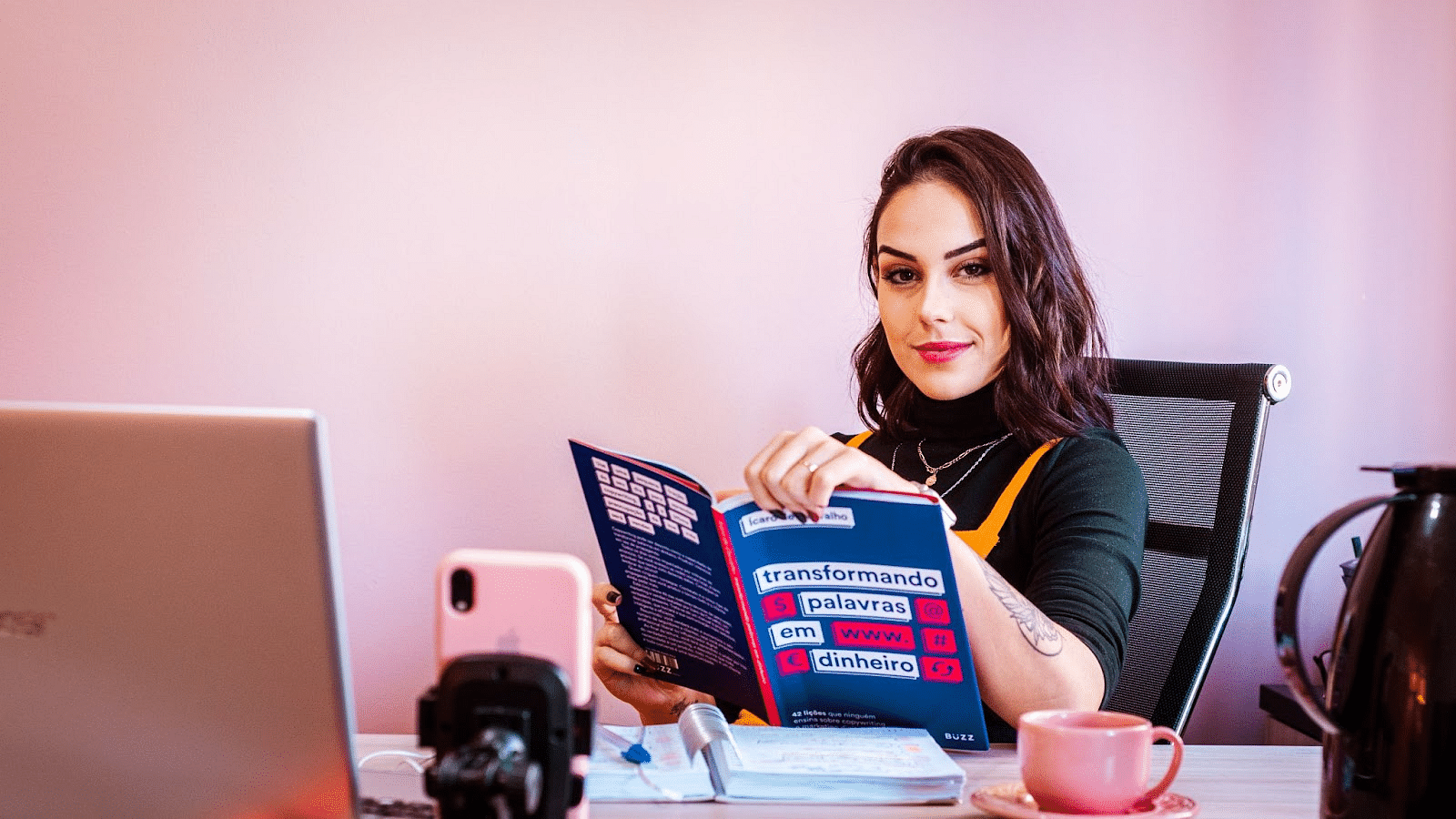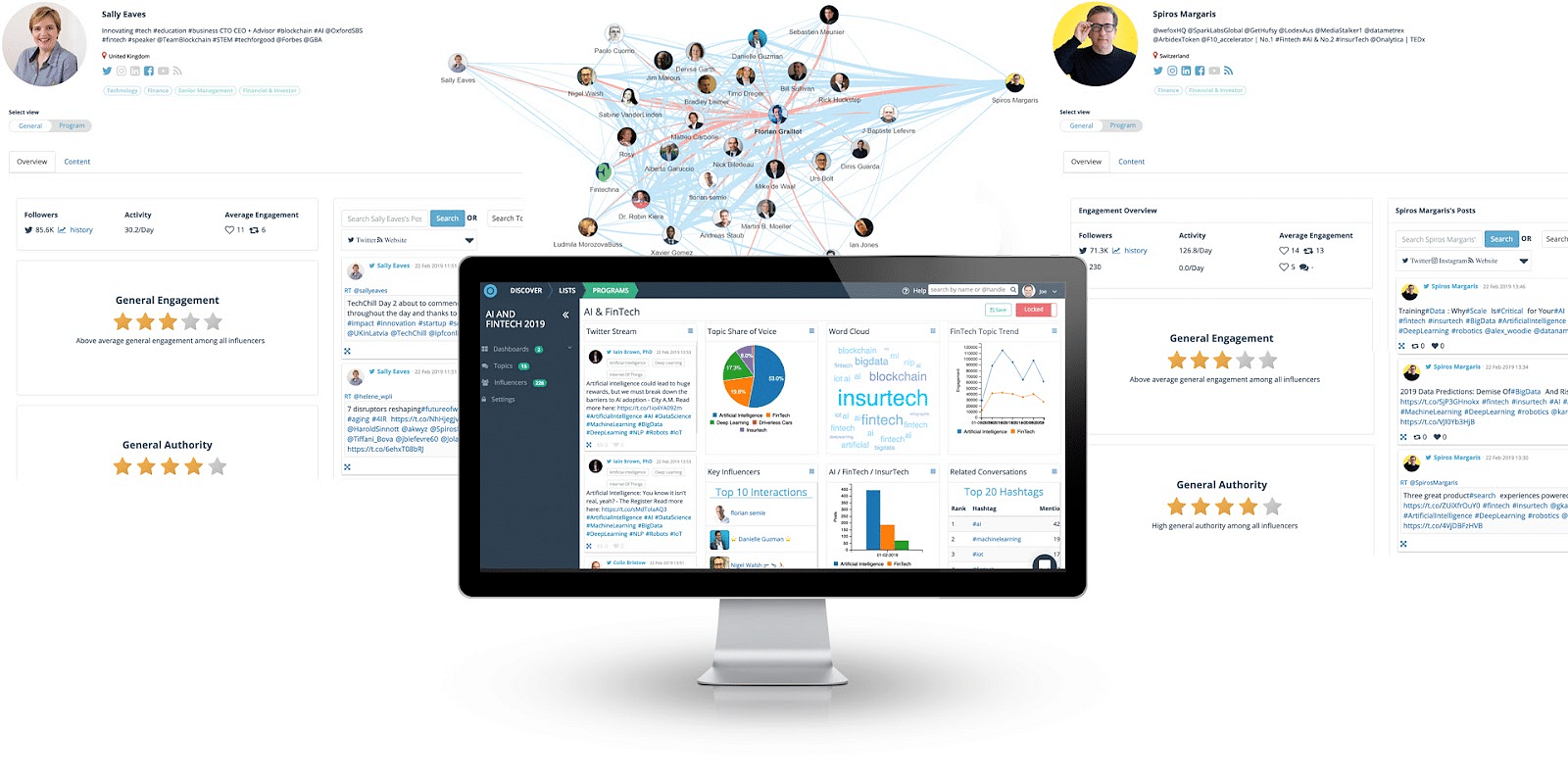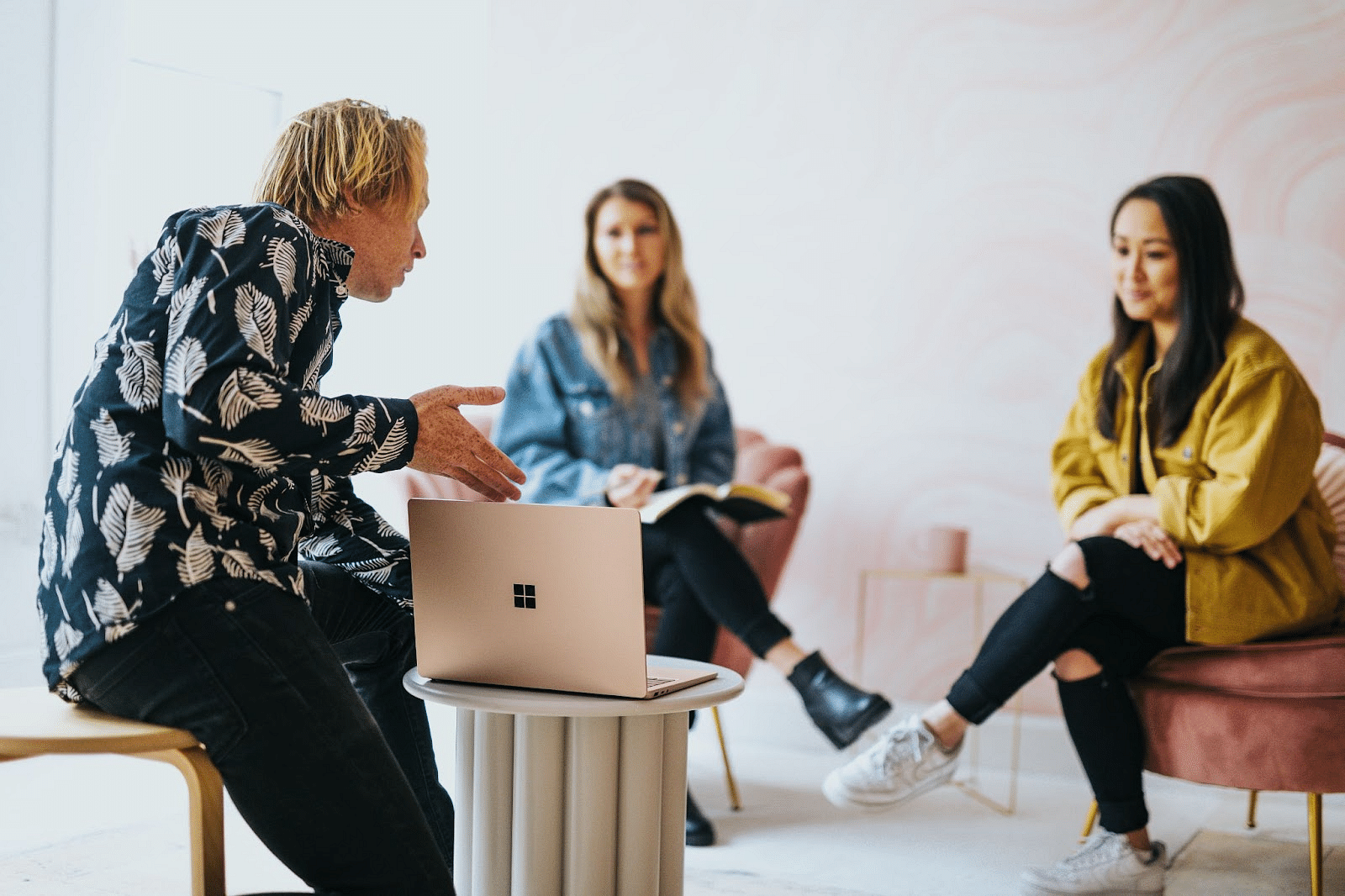
Influencer marketing: How to tap an influencer or be one even with a small social media following
By Jim James, Founder EASTWEST PR and Host of The UnNoticed Entrepreneur.
Joe Fields, who works for Onalytica, joined me on the new episode of The UnNoticed Entrepreneur to talk about influencer relations and how their company helps entrepreneurs to get noticed.
Image from LinkedIn
How Onalytica Helps Entrepreneurs
According to Joe, there are two models for entrepreneurs where Onalytica can help.
First, if you’re looking to promote yourself as an influencer and raise your profile to spotlight your brand, then their company can help you promote yourself and be recognised as an influencer. You can sign up to the My Onalytica free platform, tell them about yourself, and then they will try to unlock those opportunities for you as an influencer.
The second opportunity is about working with influencers to help promote your brand. It’s where you would use Onalytica to really identify the influencers in your topic areas and work with them to increase trust and credibility amongst your target audience. One of the main reasons people work with influencers is that there's a bit of a lack of trust at the moment around advertising and branded content. But with one-to-one, personal recommendations or reviews, it goes so much further.
What is an Influencer?
An influencer is defined as someone who has influence over a target audience.
This may be a very loose definition but, basically, it’s someone who's able to persuade people in a certain way to think more about a certain idea, concept, product, or service — and possibly influence their purchasing decision. Or, at least, just bring them to a new way of thinking about something.
At Onalytica, influencers can be defined in different ways. They are like the catch-all kind of category but there are lots of different personas within that.
There are content creators or people who are writing blogs, articles, PDFs, and all the content out there that we see. There are also the social media amplifiers who are sharing lots of content and are getting tonnes and tonnes of engagement on Twitter, LinkedIn, Instagram, and TikTok — wherever they are. And then there are the event speakers who, obviously, are people speaking at events. They bring in a larger audience and if you're looking to sell tickets to your events you might want to bring in one of those influencers.
Image from Unsplash
There are different types of influencers, making them difficult to define. For Joe, there's a lot of education that’s still needed in the marketplace because people still aren't really quite sure about what’s an influencer and what they do. And a big part of their job at Onalytica is to educate people about what it is.
Why and How to Measure Engagement
Many would define an influencer in terms of reach and number of followers. And Joe said that it’s quite easy to get into that sort of thinking.
However, the people at Onalytica think of it more in terms of the relevancy of the audience. You might have an influencer who's only got 2,000 followers, but those 2,000 followers are actually the top people who you really want to connect with. They could be C-suite decision-makers in the industry. This is why they tend not to look at reach too much.
Obviously, reach is important if you want to spread your message as far as possible. Typically, anyone who has under 1,000 or 2,000 followers would probably not be considered an influencer. But keep in mind that there are several niche topic areas where people don't usually have huge followings yet are still considered influential because of their expertise.
Hence, they tend to focus more on engagement and authority metrics as well as reach. But reach shouldn't be the most important factor to determine who you are as an influencer.
How then do they measure metrics like engagement?
For Twitter, it's quite easy because it’s a very open platform. There's a lot of easy access through an Application Programming Interface (API) feed. In that platform, engagement would be the number of likes, retweets, and comments added up together to get a certain number. On YouTube, it would be the number of views and the number of comments. LinkedIn is still quite a closed platform and they don't have an open API, but you can look at the post manually and record the metrics that way.
Other platforms are a bit more open. But primarily for business-to-business (B2B), Onalytica looks at Twitter, LinkedIn, and blogs as well. In terms of blogs, the engagement would be the number of comments on blogs, how many shares they're getting, and who's sharing them.
They also do a lot of bespoke reporting for their clients. They sell a lot of professional services and they have analysts working on lots of reporting for them. So it's not just about Onalytica as an influencer marketing platform. With them, you also get a customer success manager and you can add lots of additional services to the platform as well.
An Ever-Growing Platform for Influencers
In terms of the number of influencers listed on Onalytica, Joe said that it's growing all the time. They’re adding lots and lots of influencers. In fact, recently, they added about 2,000 to 3,000 thousand podcasts. But roughly, there are about a million influencers on the platform.
For you to activate those, you have to come to their platform’s Discover section. There, they’ve already prebuilt search queries for different topics. For example, if it’s a product that’s focused on digital transformation, they have a search query already built for you; they can easily identify the influencers in that area with just a one-click search.
Image from Onalytica
Onalytica provides filters on searches, too. You can exclude people with certain job roles. For example, you can exclude politicians, journalists, celebrities, sports professionals, and many other different roles that won't be relevant.
You can also simply look at certain channels. For instance, you might just want an influencer on LinkedIn or Twitter. You can filter by location as well.
They also give you in-depth information about the audience. Who's following these people? What sort of audience are you going to unlock by working with these influencers? Basically, you can find these in their database.
The Cost of an Influencer
You might be asking, if you’re to use the services of an influencer, would it be a one-time cost or a recurring fee?
Onalytica recently did a compensation report wherein they took an average of the price that influencers ask for particular services. For example, what's the average cost of writing a blog or of getting featured on a podcast. They’ve averaged it out by the UK, US, and North America.
You can find in-depth information in that report. However, Joe shared that it’s also key to think about it not just from a financial point of view — there could be other things that you can offer influencers that they might be interested in.
For instance, if you’re a big brand like IBM, featuring influencers (especially up-and-coming ones) can actually promote them to your audience. That’s worth a lot to an influencer alone. Inviting them to speak at an event would also help raise their profile as well.
For Joe, it all depends on the influencer and their motivations. Some influencers are professional pay-to-play influencers and you always have to pay them for their time. Meanwhile, there are other influencers who are brand employees. They have full-time jobs but they do this kind of work on the side because it helps raise their profile. And they may be not as motivated by the financial transactions as others say.
In terms of rates, Joe said that some influencers have very reasonable rates. He has seen between £500 to £2,000 to create a piece of content such as a 1,000-word blog.
A lot of influencers don't really want to be paid to post just purely on social media. So it's very rare that you'll get an influencer that you pay just to tweet, for example (It’s always kind of bundled into the package anyway).
Normally, an influencer would write a blog and share it through their channels or they would be featured in one of your LinkedIn Lives. The two of you would enter a package deal.
At Onalytica, they can help you whatever your budget is for that. You can start small and activate one or two influencers and see how that goes. Essentially, you can spend how much you want — anywhere from £500 up. It’s very affordable compared to running Google ads or having a public relations firm reach out to the media for you.
On Exclusivity
If you’re working with an influencer and you’ve got a product, you won't want your competition to work with the same influencer in the same product category.
Image from Unsplash
Joe considers this difficult because some influencers (for instance, the pay-to-play influencers) work with whoever's looking to hire them. It's difficult to make an influencer to be exclusive to you unless you put them on a retainer. And if you're happy to do that, then they'll be happy to just be your advocate and brand ambassador, and they won't work with anyone else.
Unfortunately, realistically, it's probably difficult to ensure that that's the case unless you do put them on a retainer — and unless there's someone who you’re really connected to or unless you can incentivise them in other ways.
A lot of influencers really appreciate getting access to early product research and new content. If you could give them early access to a report that you’re doing or include them in the product development stages, then they'll be more on board with you. They'll probably feel more like a partner than a freelancer.
If you want to see case studies of successful influencer campaigns by Onalytica, you can some on their website. In one of those featured in their Resources section, they worked with a group called Nature4Climate and it was basically to promote nature-based solutions to climate change. It was about trying to drive conversations around that before and after the COP23 Climate Change Conference. They activated lots of influencers, gave them all the information, and helped promote the Nature4Climate hashtag.
It’s All About Connections
There are entrepreneurs whose part of their business marketing goals is to position their CEO and the founder as a thought leader.
Employee advocacy is a solution that they offer to a lot of their clients. And they’d put the abovementioned situation under this bracket.
Through this solution, they will connect your CEO to other influencers who are experts on the topics that your brand is associated with. They’ll be creating branded content with the influencer or including the CEO in the influencers' content that can be published on both platforms. It's about creating and inspiring content that can help fast-track perception change or increase demand generation.
It's quite easy for Onalytica to connect you with lots of influencers as they have many on the platform. Joe, in fact, has already run about 600 interviews with influencers. If you go to their Blog section and filter by interviews, you'll see that there are hundreds of interviews with experts in different topic areas. They have lots of relationships which help them connect clients with these experts. And their employee advocacy solution is something that's very popular with their clients — and it works very well.
Joe also pointed out that a lot of influencers are very connected to each other. You could be an entrepreneur working with an influencer but also an influencer yourself. It's all about connections, networking, and helping each other promote each other's services.
There are a lot of two-way partnerships that happen in that way. For example, if you're an entrepreneur in the tech space and you have a new product or a new application or something you’re looking to promote, Onalytica can easily connect you to several influencers who would help promote that app, product, or service. And if you bring them into that product development stage, you can also get their knowledge into the product.
Image from Unsplash
It’s very much a two-way street and a lot of influencers would be willing to help you in different ways. So it's not just about selling a product; it's also about thought leadership and increasing trust and brand awareness.
Being an Influencer on Onalytica
To be listed as an influencer on Onalytica, you can sign up for free. It's up to you to create and get yourself noticed. And the way you get yourself noticed on their platform is to drive lots of engagement on social media.
They will provide you with tips and how-to guides — how to be an influencer, how to be more influential on Twitter, what can you do with that platform that would actually drive more engagement, how many people you should mention, how many hashtags you should use, what key topics you should talk about (You shouldn’t be too broad. Narrow your focus on the specific areas that are relevant to your brand).
It’s also the same with LinkedIn. There are different tips and tricks that you can do to get yourself more noticed on that platform as well.
Their platform for those who wanted to be listed as influencers is my.onalytica.com. When you sign up there, you should tell them about yourself as much as you can. Once you’re on the platform, you can add blogs, articles, podcasts, and videos of you speaking at events — all these things can be added to your profile. Then, it becomes about driving engagement so your profile starts appearing in more searches.
You will also receive alerts to tell you that your profile has been viewed this many times by this brand. They’ll also show you if it goes up or down from week to week and month to month. There is free analytics in there as well.
Their business model is based on selling software licences to brands. They don't currently charge influencers anything to sign up to their platform. That may change as the platform gets more developed. However, at the moment, this influencer sign-up marketplace (which has only been going since June last year) is free. It’s still very nascent but as they build out more and more features, they may include a freemium model, a beginner, an intermediate, and an advanced influencer model.
If you’re a brand that plans to use influencers or become an influencer yourself, visit their website to find out more information about Onalytica. If you have already something in mind, you can jump straight to the contact page and reach out to their interactive sales team. There's also an instant chat messenger on their website so someone can get back to you straight away.
This article is based on a transcript from my podcast The UnNoticed Entrepreneur, you can listen here.
Cover image by Diggity Marketing on Unsplash






